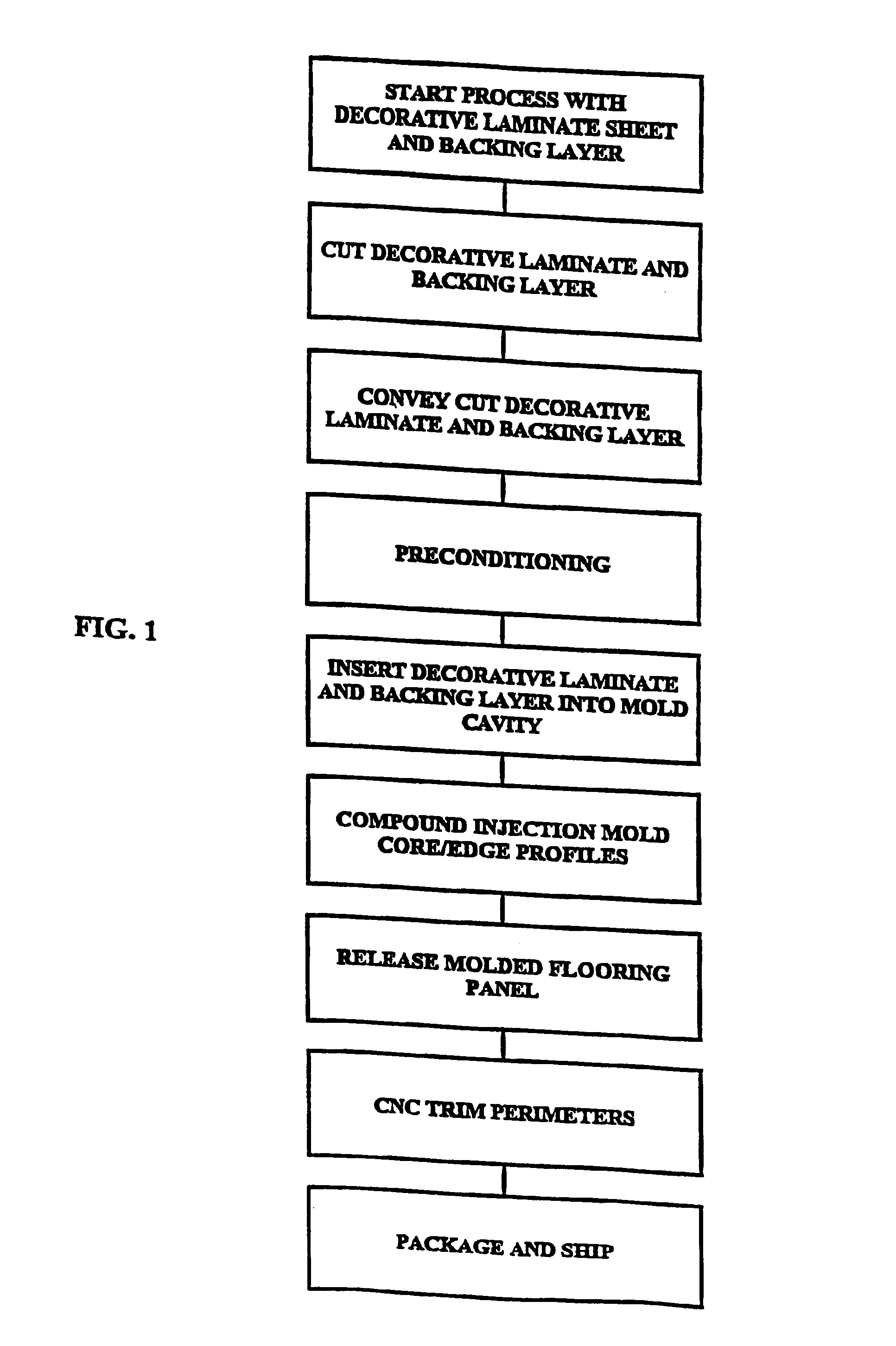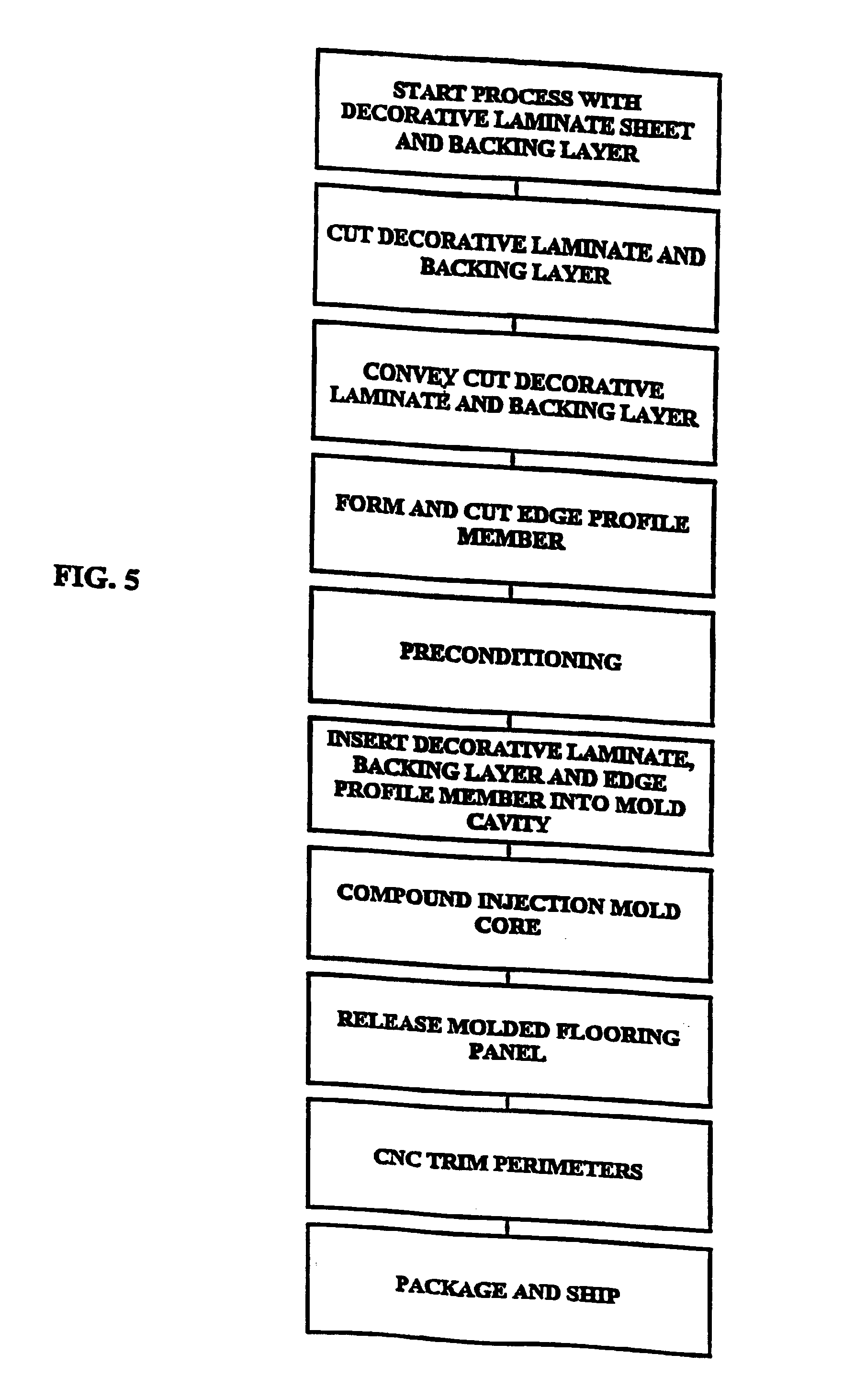Compound injection molded high pressure laminate flooring
a technology of laminate flooring and high pressure, applied in the direction of transportation and packaging, other domestic articles, and cellulosic plastic layered products, etc., can solve the problems of reducing the production capacity of the remaining line, limiting the production capacity of the remaining line, and reducing the production capacity of the entire processing lin
- Summary
- Abstract
- Description
- Claims
- Application Information
AI Technical Summary
Problems solved by technology
Method used
Image
Examples
Embodiment Construction
[0036]The detailed embodiments of the present invention are disclosed herein. It should be understood, however, that the disclosed embodiments are merely exemplary of the invention, which may be embodied in various forms. Therefore, the details disclosed herein are not to be interpreted as limited, but merely as the basis for the claims and as a basis for teaching one skilled in the art how to make and / or use the invention.
[0037]With reference to FIG. 1, a flow chart of a preferred method in accordance with the present invention is disclosed. The method generally relates to the manufacture of decorative laminate panels, and particularly, the manufacture of decorative laminate flooring planks. The present method provides for the compound injection molding of decorative laminate flooring planks in a piecewise manner. This eliminates the problems associated with conventional line techniques employed in the prior art and discussed above in the “Background of the Invention”.
[0038]The ter...
PUM
| Property | Measurement | Unit |
|---|---|---|
| time | aaaaa | aaaaa |
| size | aaaaa | aaaaa |
| speed | aaaaa | aaaaa |
Abstract
Description
Claims
Application Information
 Login to view more
Login to view more - R&D Engineer
- R&D Manager
- IP Professional
- Industry Leading Data Capabilities
- Powerful AI technology
- Patent DNA Extraction
Browse by: Latest US Patents, China's latest patents, Technical Efficacy Thesaurus, Application Domain, Technology Topic.
© 2024 PatSnap. All rights reserved.Legal|Privacy policy|Modern Slavery Act Transparency Statement|Sitemap



